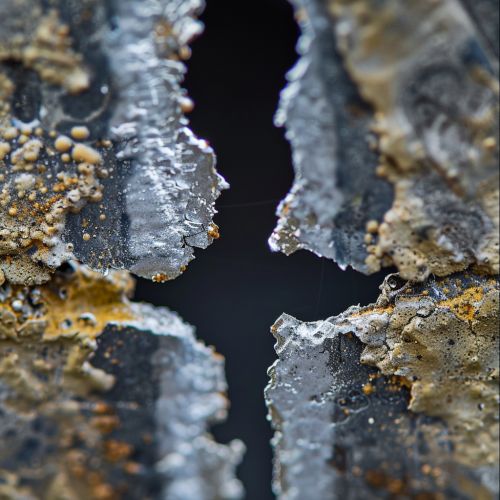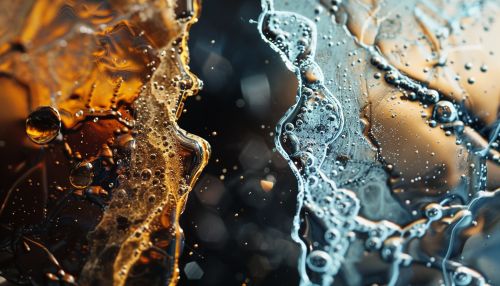Chemical adhesion
Introduction
Chemical adhesion refers to the bonding between two surfaces due to the chemical interaction between them. This interaction can be a result of various forces such as Van der Waals, ionic, covalent, or metallic bonds. The strength and nature of these bonds determine the effectiveness of adhesion.


Types of Chemical Adhesion
Chemical adhesion can be categorized into four main types based on the nature of the forces involved:
Van der Waals Adhesion
Van der Waals adhesion is a type of physical bond that occurs when the electron clouds of two adjacent atoms or molecules become synchronized and create a temporary bond. This type of adhesion is relatively weak and reversible.
Ionic Adhesion
Ionic adhesion occurs when one atom donates an electron to another, creating two ions of opposite charge. These ions are then attracted to each other, creating a bond. This type of adhesion is stronger than Van der Waals adhesion but is still reversible.
Covalent Adhesion
Covalent adhesion is a type of chemical bond where two atoms share one or more pairs of electrons. This type of adhesion is very strong and often irreversible.
Metallic Adhesion
Metallic adhesion occurs when electrons are free to move within a metal lattice, creating a ‘sea’ of electrons that holds the metal atoms together. This type of adhesion is strong and often irreversible.
Factors Affecting Chemical Adhesion
Several factors can affect the strength and effectiveness of chemical adhesion. These include:
Surface Energy
The surface energy of a material can greatly affect its ability to form a chemical bond with another material. Materials with high surface energy are more likely to form strong bonds.
Surface Roughness
The surface roughness of a material can also affect its ability to form a bond. Rough surfaces have more surface area for bonding and can form stronger bonds.
Environmental Conditions
Environmental conditions such as temperature, humidity, and pressure can also affect the strength of a bond. For example, high temperatures can weaken some types of bonds, while low temperatures can strengthen others.
Applications of Chemical Adhesion
Chemical adhesion is used in a variety of applications, including:
Adhesives
Chemical adhesion is the primary mechanism by which adhesives work. The adhesive forms a bond with the surfaces it is applied to, holding them together.
Coatings
Chemical adhesion is also used in the application of coatings to surfaces. The coating forms a bond with the surface, allowing it to adhere and provide protection or other desired properties.
Medical Devices
In the field of medical devices, chemical adhesion is used to bond components together, as well as to bond devices to human tissue in some cases.
